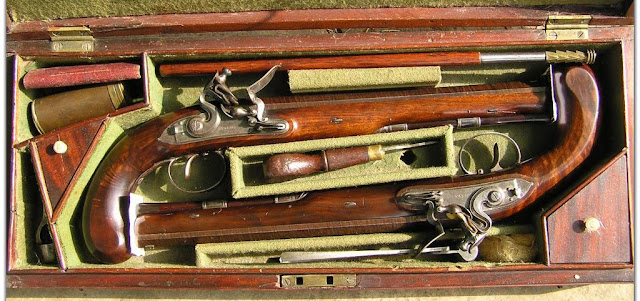Why Firearms Restrictions?
·
Terrorism
·
Crime
·
Suicides
Do restrictions on law abiding licensed firearms owners
do anything to stop the above problems/threats? Answer: No
Why No? Because law abiding citizens are not criminals or
terrorists & if they want to commit suicide they have other gentler means
of killing themselves without blowing their brains out.
How do restrictions to muzzle-loading long arms &
pistols effect the above? They don’t is the easy answer. No criminal will
choose a muzzle-loading firearm over a modern breach loading firearm to use in
committing a crime.
Why are restrictions placed on muzzle-loading firearms by
the Australian government if by doing so it has no effects on crime, terrorism
or suicide? Good question, & if we could actually ask the government this
question & get an answer, it would be very interesting to hear but probably
complete & utter bullshit.
Firearms restrictions are based on the premise that they
keep the public safe, but to date that has never been proven to be the case, in
fact, there is some question as to whether being able to carry a side arm in
public may not actually be a deterrent to crime & terrorism.
Let us take a look at the rules in NSW concerning
muzzle-loading firearms:
·
Antique muzzle-loading guns do
not require a permit to purchase, registration, or a firearms licence. But you
are not legally allowed to fire an antique gun.
·
Replica muzzle-loading guns are exactly
the same as antique muzzle-loading guns, exactly the same in all respects.
The loading procedure, the firing procedure, & the ignition method. All are
the same. Replica muzzle-loaders are just that, they are replicated copies of
originals. Not breach loaders, not smokeless gunpowder, not fast loading, not
high powered. But still they require registration, permit to purchase, & a
firearms licence. In the case of a flintlock, matchlock, tinderlock or wheel
lock pistol, they require a Pistol Licence, & to get a pistol licence you
have to join a pistol club, & to maintain membership you have to attend
regular meetings, & the membership is expensive. On top of this you are not
allowed to use this muzzle-loading pistol anywhere except on an approved firing
range.
Anyone wanting to make a crude muzzle-loading gun can do
so in about 30 minutes using a piece of gas pipe. It would be illegal to do so,
but it could easily be done. Yet the above restrictions on these primitive guns
are supposed to be keeping the public safe from harm. If it were not so
serious, if it did not seriously affect people’s rights to recreation through
Living History & Historical Re-enacting, it would be laughable. The
legislators who pen these laws may well be looked on as a joke, but the
restrictions they place on law abiding citizens is no joke.
I respect other people’s points of view, I understand why
some people are frightened by guns. I understand & respect their wish not
to own or use a gun, even in the defence of their loved ones & themselves.
But I simply can not understand why they are unable to look at the situation
& understand that law abiding citizens are not the enemy, we are not a part
of the problem, and we are not criminals. Treating us as such is unforgivable
& an offence against human rights.
Disagreeing with someone is a human right, but spreading
misinformation & lies is something else. The Greens, the government &
other anti-gun lobby groups are guilty of spreading misinformation, lies &
fear mongering in order to achieve further restrictions on firearms &
ammunition just to satisfy their own need to control people, to gain some sort
of power. It makes them feel good. What then does this say for these sorts of
people?
We, the law abiding gun owner are not totally blameless
in the restrictions that we suffer. Self-serving organisations such as the
S.S.A.A. (Sporting Shooters Association Of Australia) could be doing a lot more
for Australian gun owners, but instead it seems to me that they are more
interested in not rocking the boat & at the same time lining their own
pockets. Individuals are divided, muzzle-loading shooters have always readily
backed modern gun shooters, but modern firearms owners are often guilty of
hanging us black powder enthusiasts out to dry! I don’t see that anyone is
dividing us, we seem to have divided ourselves. When we finally have so many
restrictions & possibly even confiscations, then we will have no one to
blame but ourselves.
Keith H. Burgess.

















































